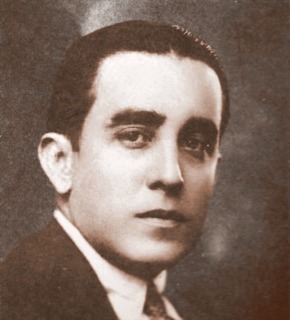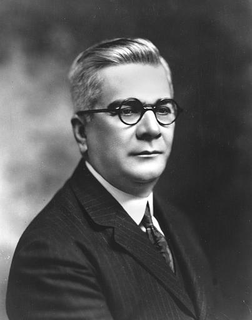 W
WThe Republic of Cuba from 1902 to 1959 encompasses the period after Cuba's independence from the Spanish Empire and end of its first U.S. military occupation in 1902. This era included various changing governments and US military occupations, and ended with the success of the Cuban Revolution in 1959. During this period, the United States exerted great influence on Cuban politics, notably through the Platt Amendment.
 W
WJosé Agripino Barnet y Vinajeras was a Cuban politician and diplomat who served as interim President of Cuba from December 11, 1935 to May 20, 1936.
 W
WBlas Roca Calderio was a Cuban politician and Marxist theorist who served as President of the National Assembly of People's Power in Cuba from 1976 to 1981. He was also head of the pre-1959 revolution Communist Party of Cuba for 28 years and editor of the communist newspaper Hoy. He was a signatory of the Cuban Constitution of 1940 and chaired the committee that wrote the country's first socialist constitution in 1976.
 W
WCarlos Manuel de Céspedes y Quesada was a Cuban writer, politician, diplomat, and President of Cuba.
 W
WJosé Manuel de Cortina y García was a Cuban politician, lawyer and journalist.
 W
WMiguel Mariano Gómez y Arias was a Cuban politician who served as 7th President of Cuba for seven months in 1936.
 W
WDr. Ramón Grau San Martín was a Cuban physician and President of Cuba. He was the last president other than an interim president, Carlos Manuel Piedra, to be born during Spanish rule. He is sometimes called Raymond Grau San Martin in English.
 W
WGeneral Alberto Herrera y Franchi was the interim President of Cuba from August 12 to August 13, 1933.
 W
WCarlos Hevia y de los Reyes-Gavilan was the interim President of Cuba, serving for less than three days. During the third week of 1934, Hevia was President from 5:00 p.m. on Monday, January 15, until 1:20 a.m. on Thursday, January 18. Cuban junta leader Fulgencio Batista had obtained the resignation of Hevia's predecessor, Ramón Grau. The choice of Hevia was unpopular with the military, and by Wednesday, the new President was asked to resign. He was replaced by Manuel Márquez Sterling.
 W
WDr. Federico Laredo Brú was an attorney and served as President of Cuba from 1936 to 1940. He was married to Leonor Gomez-Montes (1880-?).
 W
WGerardo Machado y Morales was a general of the Cuban War of Independence and President of Cuba from 1925 to 1933.
 W
WManuel Márquez Sterling was a Cuban diplomat and interim President of Cuba for a few hours on January 18, 1934.
 W
WCarlos Mendieta y Montefur was a Cuban politician and interim President of Cuba.
 W
WPentarchy of 1933, formally known as the Executive Commission of the Provisional Government of Cuba, was a coalition that ruled Cuba from September 5 to September 10, 1933 after Gerardo Machado was deposed on August 12, 1933. Prior to the Pentarchy, General Alberto Herrera and Carlos Manuel de Céspedes y Quesada served as President of Cuba.
 W
WCarlos Saladrigas Zayas was a Cuban politician and diplomat.
 W
WCosme de la Torriente y Peraza was a Cuban soldier, politician, lawyer and statesman.